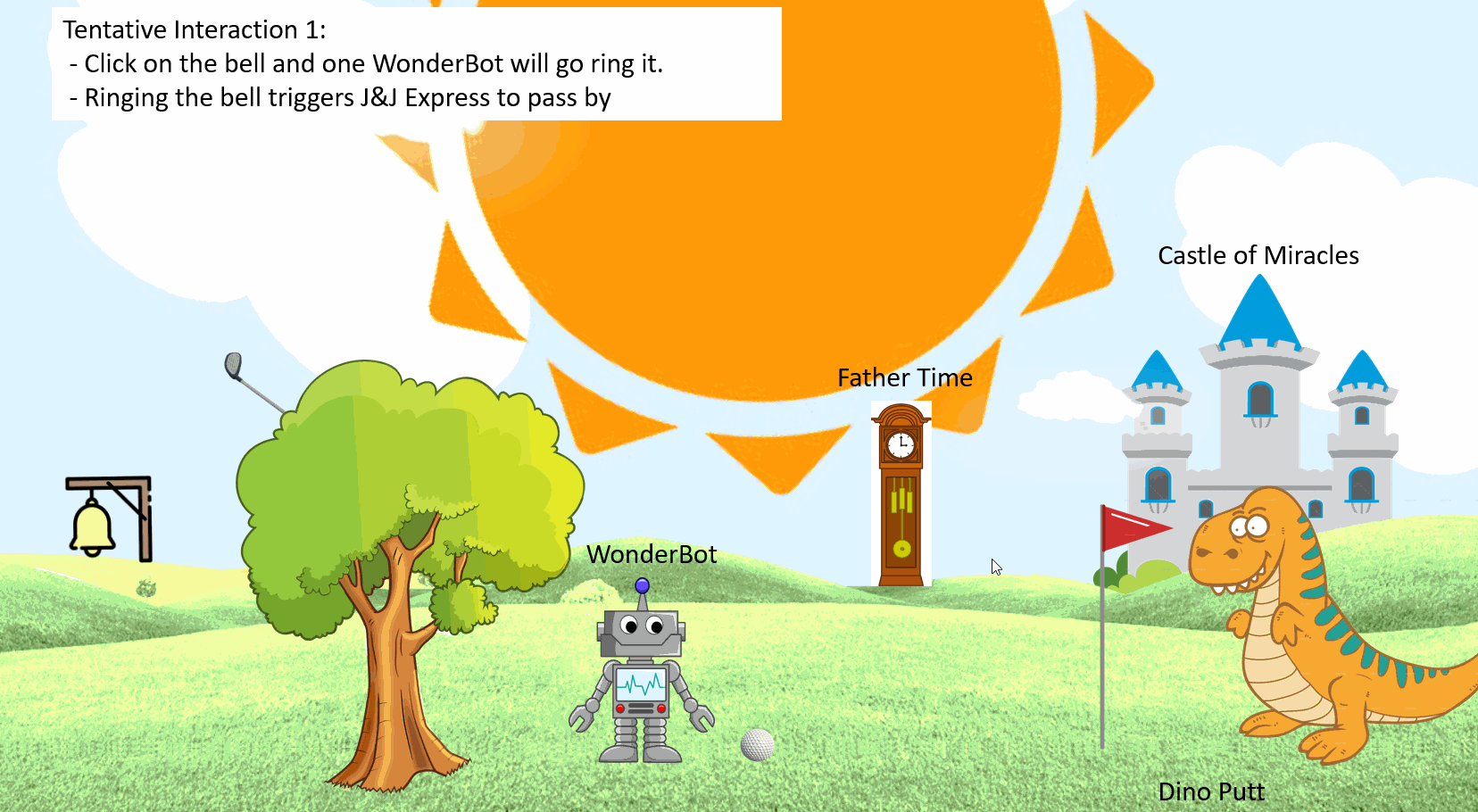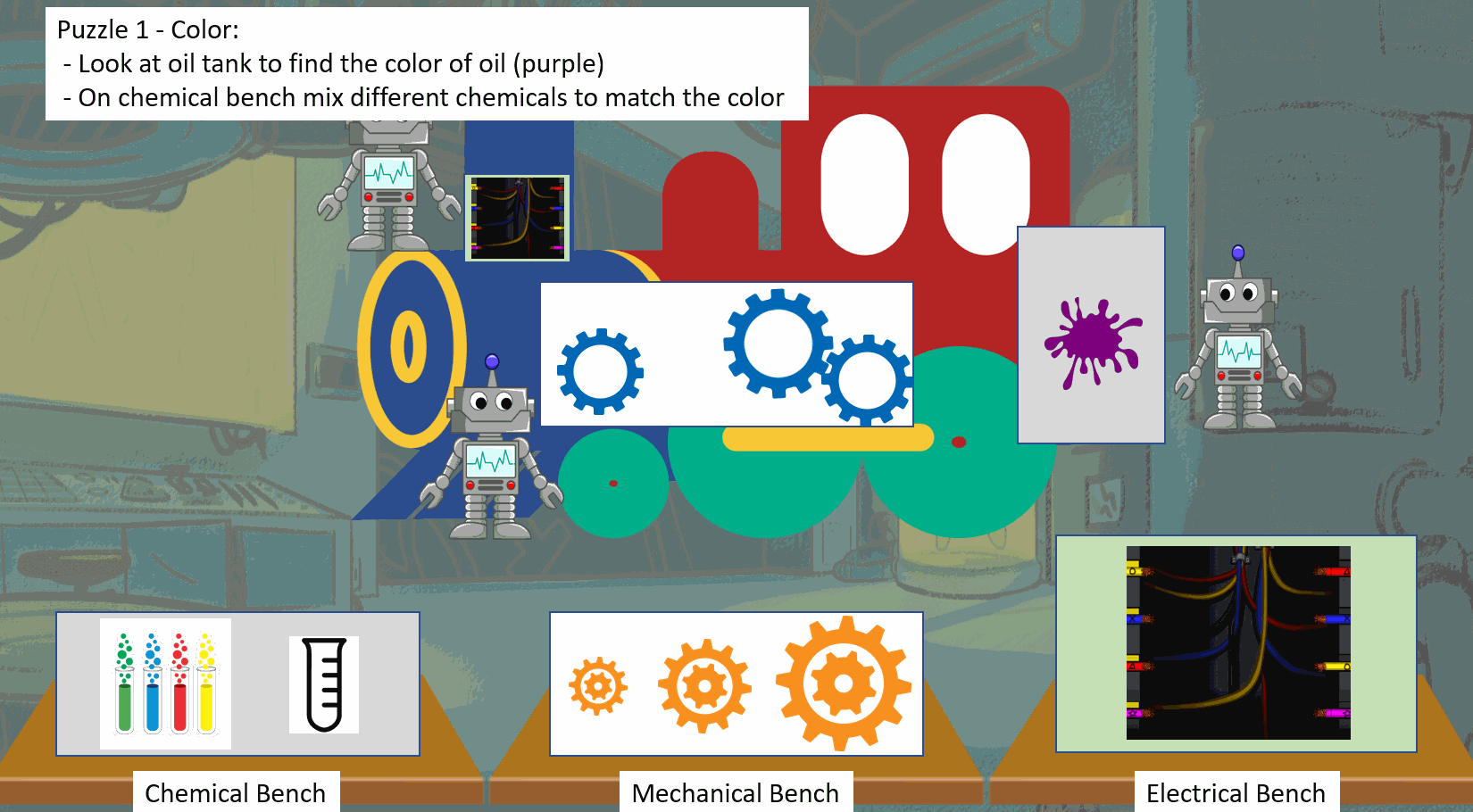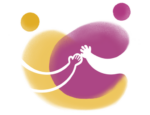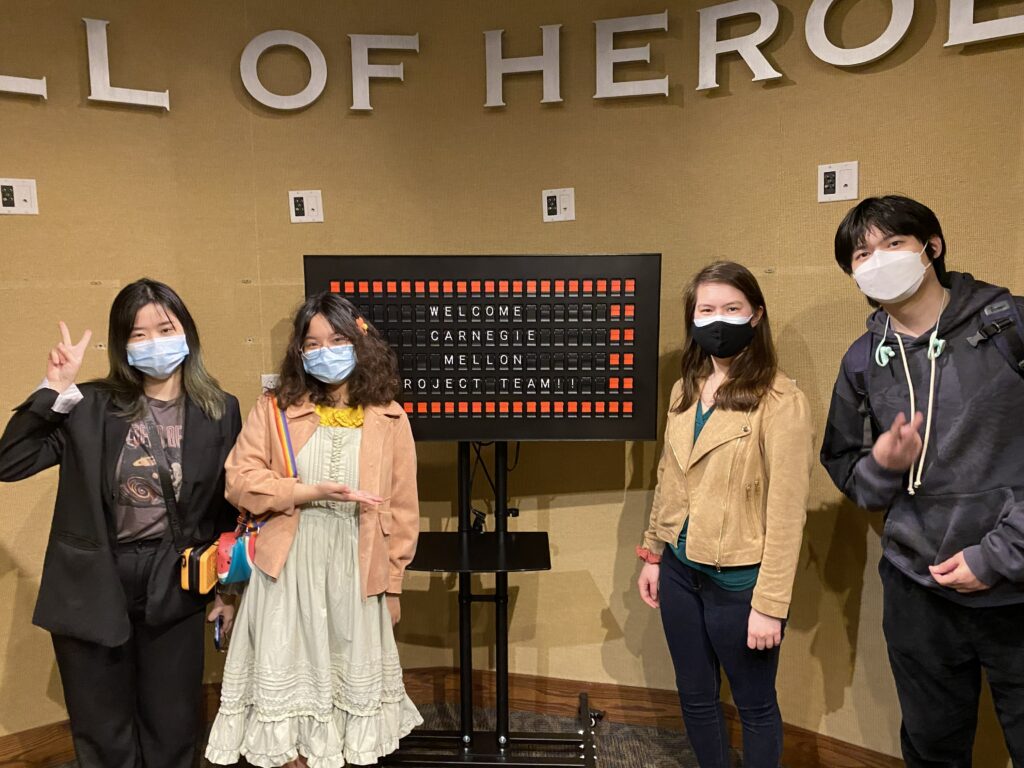The Orlando Trip
Four of us woke up at 4:00am for the early flight, but the Orlando trip was beyond worth it!
After meeting our wonderful clients Ian and Adam in-person, they took us on a tour of the entire GKTW Village. We visited several attractions there, including Marc’s Dino-Putt, Julie’s Safari Theatre, the Castle of Miracles, Amberville, and so much more! We also saw the Hall of Heroes, the existing building which will soon be repackaged into Mayor Clayton’s WonderLab, and met with the designers of the WonderLab, Evan and Christie Miga from Miga Me.
With Ian, Adam, Evan, and Christie, our team had a fantastic multi-hour brainstorming session, and we gained a lot of insight about the theme and conception of the WonderLab. We discussed several ideas on how thematically our experience could incorporate elements of the WonderLab design, as well as icons of the GKTW Village as a whole. We also discussed potential personalities and traits of the WonderBots, three robotic characters who call the WonderLab home. At night we also attended the weekly Silly Science Party and interacted with some of the wish kids and their families.
The next day, we visited Walt Disney World’s Magic Kingdom and met ETC Alumni Christine Barnes and Danielle Holstine – subject matter experts in the theme entertainment industry. They shared a lot of useful tips on how to design robust physical props with RFID and IR sensing, as well as how we could potentially incorporate them into our experience and potential pitfalls of the technology. Christine gave us a tour of some attractions at Magic Kingdom that implement RFID technology, including the Pirates of the Caribbean “A Pirate’s Adventure – Treasures of the Seven Seas,” and Danielle discussed with us in-detail how IR sensing at Universal Studios was used for the Wizarding World of Harry Potter.
Coming back from the Orlando trip, we were filled with inspiration, leading us to finalize our design direction, and start technical prototypes.
Paper Prototypes
We compiled all the feedback and ideas to come up with two concrete concepts with completely different themes and mechanics. We plan to once again pitch our potential concepts to Ian and Adam in order to select a definitive direction and move forward from there.
Because our new ideas are more concrete, we developed with paper prototypes in PowerPoint to better demonstrate our proposed interactions.
The first idea is an interactive GKTW playground. This miniature GKTW Village is a highly interactive environment featuring a collection of mini-puzzles. Kids can directly interact with all the elements in the environment and be rewarded with special animations and sounds. The puzzles vary in difficulty; some are solved with a simple point-and-click interaction while others are solved by finding a sequence of clues. It can support multiple controllers so younger kids can play with simple interactions while older kids can look for clues to solve harder puzzle. The experience can also be potentially exported to a standalone PC/Web/Mobile Build that kids can play prior to their visit.

The second idea is a train repairing experience. Three workbenches exist in the space, each with a different specialty (e.g. chemistry, mechanics, electricity). The WonderBots will bring in an item in need of repair, and children can select which component(s) they would like to fix. Each problem presents itself in the form of a puzzle – some interactions may be selecting the correct tool for the job, color-mixing, performing chemistry tests, or connecting wires. These could be virtual or physical puzzles (or a combination of the two). When the object is repaired, the WonderBots will take it away and bring in the next item. The experience supports multiple guests as they can each play with one bench / puzzle simultaneously.

Digital Prototypes
At the same time, we also began exploring potential technical implementations of our ideas. Three different input methods we currently have in mind are Kinect, Vive Trackers, and Custom Physical Controllers. We started with the first two because they inherently possess the ability to track location and orientation as input, which could be an essential part of the experience.
Vive Trackers are small, round devices that include an array of SteamVR Tracking sensors. Our vision is to turn a Vive Tracker into a laser-pointer style controller that supports aiming and maybe clicking. We developed a technical demo with Vive Trackers in Unity which reads the location and orientation of the trackers. However, through testing we found out that the orientation detection is not accurate enough to support a laser-pointer style aiming control, and the trackers’ battery life clearly would not support a full day of operation at GKTW, which raises maintenance concerns.
Kinect is a motion sensing platform that contains RGB cameras and infrared sensors that map depth. Our vision was to specify a physical controller shape (stick, sphere, etc.), and use Kinect to detect the location and orientation of the physical controller to achieve the laser-pointer style control. We effectively integrated the OpenCV library to detect different types of objects. Unfortunately, getting more specific with orientation will require a trained data model which is outside of our skillset, and we believe that learning how to implement it will take us longer than the time we can budget on controller implementation.
With the above experimentation, we learned the limitations of both platforms which has helped us to decide on the third option – custom physical controllers. During our Orlando trip, we learned about the basics of RFID technology; we have since ordered Arduino Kits and RFID modules and will be ready to start prototyping with them next week.
The Second Pitch
We ended the week with our second pitch presentation to our client. We demonstrated two project ideas with the PowerPoint prototypes and made it clear that those are two ideas that the team would be happy to pursue further.
The feedback we got was very helpful. Ian and Adam loved the train repairing fantasy because Mayor Clayton’s WonderLab is heavily themed around a modern makerspace, and the theme of our experience would fit really well into the narrative of the building. But they also expressed clear interest in the exploration aspect and wanted that to be the focus of the experience. We plan to design our world such that there’s no correct answer to a problem, and guests won’t feel frustrated for not figuring out a specific answer.
Taking all of that valuable feedback into account, we are hoping to make some more design changes to the second concept and turn it into a modular train building experience.


